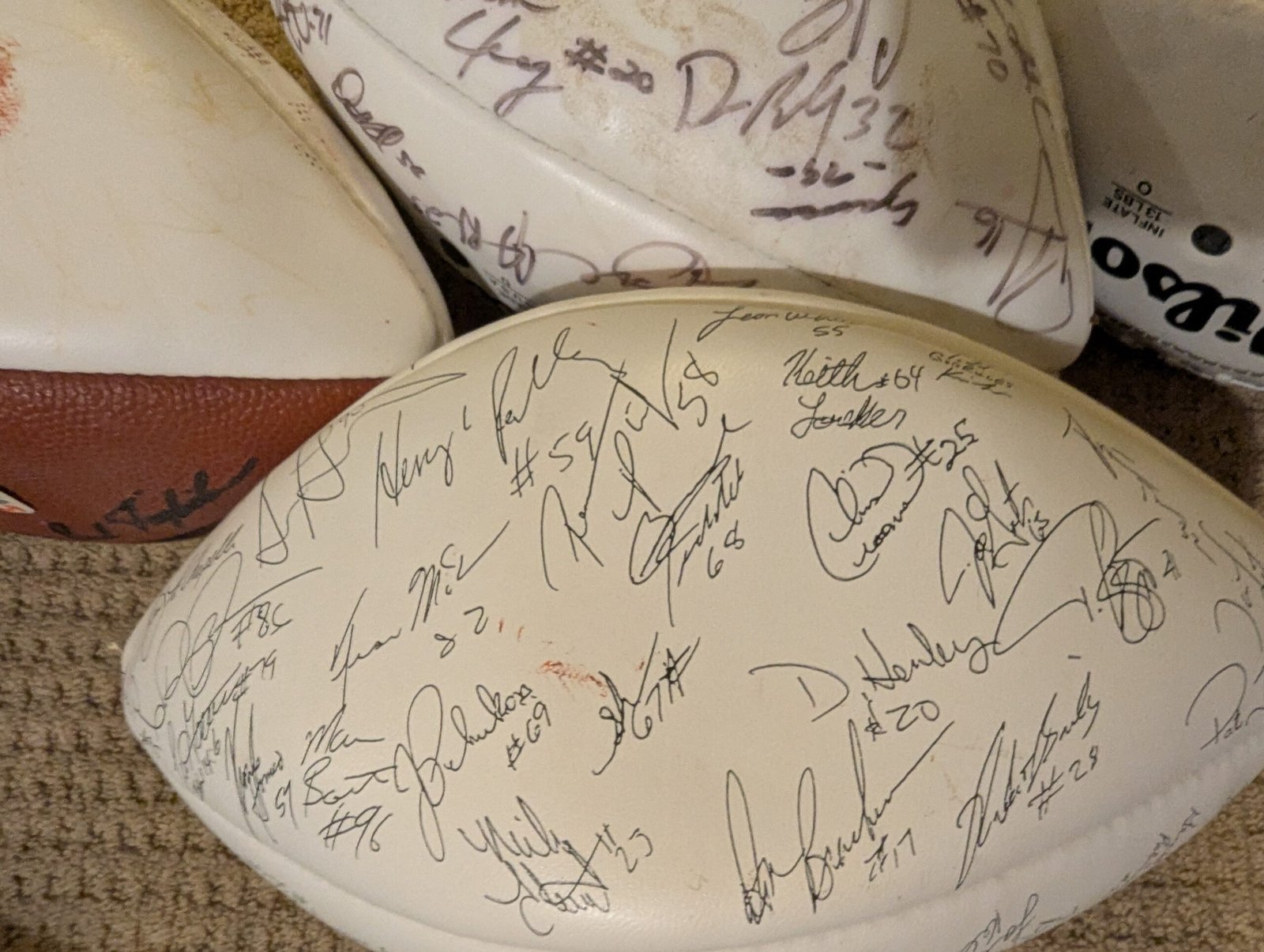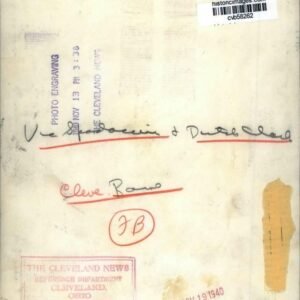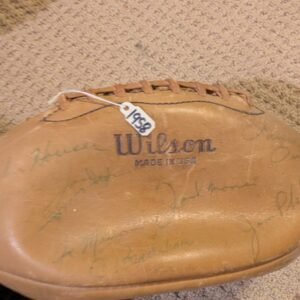The 1993 Los Angeles Rams season continued the struggles that had plagued the team throughout the early 1990s. Despite the team’s attempts to rebuild and stabilize, they finished the season with a 5-11 record, reflecting their continued difficulty in finding consistent success.









Regular Season Record: 5-11
For the second consecutive season, the Rams finished with a 5-11 record, marking a period of decline for the franchise. They remained near the bottom of the NFC West division, continuing to deal with a lack of consistency on both offense and defense. The 1993 season was another example of how the Rams were stuck in a cycle of rebuilding, yet without immediate results.
Coaching and Staff:
Under John Robinson in his third season as head coach, the Rams were still in a rebuilding phase. Robinson, who had led the Rams in the 1980s with some success, had been brought back to try to bring stability and success to the team. However, 1993 again showed that it would take more time to get the Rams back on track. With another disappointing season, the Rams’ coaching staff faced increased pressure to produce results.
Quarterback Play:
The quarterback position remained a point of contention for the Rams. Jim Everett, who had been the starting quarterback for several seasons, continued to struggle with inconsistency. He was benched for parts of the season in favor of Chris Miller, but neither quarterback could fully seize control of the offense and establish consistency.
Everett was still regarded as a talented quarterback, but his lack of development and inconsistent play in key moments hindered the Rams’ ability to move the ball effectively. Miller had his own struggles, making it clear that the Rams’ issues went beyond the quarterback position.
Running Game:
The running game continued to be an area where the Rams faced difficulties. Greg Bell was still the primary running back, but without a strong offensive line to support him, his effectiveness was limited. The team struggled to establish a consistent ground attack, and Bell was often tasked with making plays behind a line that was unable to open up significant holes for him.
Wide Receiver Play:
While the Rams’ receiving corps had some talent, it was not enough to help the offense stay competitive. Flipper Anderson, one of the team’s most dangerous playmakers, continued to be a bright spot. He was capable of big plays and could stretch the field with his speed, but, like most of the offense, he lacked consistency due to the instability at quarterback.
The Rams’ offense was generally stagnant, and despite some individual flashes of brilliance from players like Anderson and Bell, the team’s inability to put together sustained drives kept them from being competitive throughout the season.
Defensive Play:
Defensively, the Rams were better than their offense, but not by much. Key players like Kevin Greene (linebacker) and Leslie O’Neal (defensive end) continued to show individual brilliance, but the defense as a whole was inconsistent. While Greene was a constant force, the team as a unit still lacked the ability to stop opposing offenses on a regular basis.
The Rams’ defense showed occasional flashes of brilliance, particularly with Greene’s ability to rush the passer, but the defense was not able to consistently support the offense or help the team win games.
Special Teams:
Special teams were another area where the Rams had issues. John Baker, the team’s kicker, and other special teams players showed moments of competence, but overall the unit was inconsistent, failing to capitalize on key opportunities in close games.
Key Players:
-
Jim Everett (QB): The Rams’ starting quarterback for much of the season, Everett struggled to put together a consistent season. He was benched at times for Chris Miller, and while both quarterbacks had flashes of potential, neither could develop into a long-term solution for the team.
-
Greg Bell (RB): Bell was once again the primary running back but was often hindered by a lack of support from the offensive line. He could make plays when given the opportunity but rarely had the sustained success needed to carry the team offensively.
-
Flipper Anderson (WR): Anderson was one of the few consistent threats in the Rams’ passing game, showing off his ability to make big plays and stretch the field. However, he was not enough to turn the tide for an offense that lacked stability at the quarterback position.
-
Kevin Greene (LB): The standout defensive player for the Rams, Greene was a key figure in the pass rush and earned Pro Bowl honors in 1993. Despite his individual success, the Rams’ defense was unable to make enough stops to help the team win consistently.
Challenges and Struggles:
The 1993 season was a continuation of the struggles the team had faced in the early ’90s. The offense, led by inconsistent quarterback play, was unable to generate enough points to keep pace with other teams. The defense, while having standout players like Kevin Greene, could not overcome its inconsistencies and often allowed too many points.
The Rams’ inability to put it all together was a continuing theme. They were not a good enough team to compete with the stronger teams in the NFC West, and their efforts were simply not enough to push them into playoff contention.
Looking Ahead:
The 1993 Los Angeles Rams were yet another rebuilding team in the long transition for the franchise during the early ’90s. With a 5-11 record, it was clear that changes were needed, particularly at the quarterback position and in the offensive line. As the Rams continued their rebuilding efforts, they would eventually relocate to St. Louis in 1995, where they hoped to find better success.
In summary, the 1993 Los Angeles Rams were a team still in the process of rebuilding, facing significant struggles both offensively and defensively. Their 5-11 record highlighted their ongoing search for stability and success, and the season set the stage for further changes in the years to come. While players like Kevin Greene and Flipper Anderson provided some bright spots, the team as a whole was still far from competing for a playoff spot in a highly competitive NFC West.
Head Coach: Chuck Knox
- To be listed, a player must have played at least one game for the team during this season.
- * Hall of Fame
- + Primary starter
| Pos | # | Player | GP | GS | Start Pos | Exp | DOB | Ht | Wt | College | |
|---|---|---|---|---|---|---|---|---|---|---|---|
| WR | Flipper Anderson | 15 | 6 | 03/07/1965 | ‘ “ | UCLA | |||||
| T | Darryl Ashmore | 9 | 1 | 11/01/1969 | ‘ “ | Northwestern | |||||
| CB | Robert Bailey | 9 | 3 | 09/03/1968 | ‘ “ | Miami (FL) | |||||
| RB | * | Jerome Bettis | 16 | R | 02/16/1972 | ‘ “ | Notre Dame | ||||
| DT | Marc Boutte | 16 | 2 | 07/26/1969 | ‘ “ | Louisiana State | |||||
| S | Deral Boykin | 16 | R | 09/02/1970 | ‘ “ | Louisville | |||||
| P | Don Bracken | 3 | 8 | 02/16/1962 | ‘ “ | Michigan | |||||
| LB | Jeff Brady | 6 | 3 | 11/09/1968 | ‘ “ | Kentucky | |||||
| C | Bern Brostek | 16 | 4 | 09/11/1966 | ‘ “ | Washington | |||||
| WR | Richard Buchanan | 5 | 1 | 05/08/1969 | ‘ “ | Northwestern | |||||
| C | Blair Bush | 16 | 16 | 11/25/1956 | ‘ “ | Washington | |||||
| TE | Pat Carter | 11 | 6 | 08/01/1966 | ‘ “ | Florida State | |||||
| LB | Brett Collins | 10 | 2 | 10/08/1968 | ‘ “ | Washington | |||||
| LB | Shane Conlan | 12 | 7 | 03/04/1964 | ‘ “ | Penn State | |||||
| CB | Dexter Davis | 6 | 3 | 03/20/1970 | ‘ “ | Clemson | |||||
| TE | Troy Drayton | 16 | R | 06/29/1970 | ‘ “ | Penn State | |||||
| T | Irv Eatman | 16 | 8 | 01/01/1961 | ‘ “ | UCLA | |||||
| WR | Henry Ellard | 16 | 11 | 07/21/1961 | ‘ “ | Fresno State | |||||
| QB | Jim Everett | 10 | 8 | 01/03/1963 | ‘ “ | Purdue | |||||
| RB | Cleveland Gary | 15 | 5 | 05/04/1966 | ‘ “ | Miami (FL) | |||||
| DT | Sean Gilbert | 16 | 2 | 04/10/1970 | ‘ “ | Pittsburgh | |||||
| G/T | Leo Goeas | 16 | 4 | 08/15/1966 | ‘ “ | Hawaii | |||||
| CB | Courtney Griffin | 7 | 1 | 12/19/1966 | ‘ “ | Fresno State | |||||
| FB | Howard Griffith | 15 | 1 | 11/17/1967 | ‘ “ | Illinois | |||||
| CB | Wymon Henderson | 9 | 7 | 12/15/1961 | ‘ “ | Nevada – Las Vegas | |||||
| CB | Darryl Henley | 5 | 5 | 10/30/1966 | ‘ “ | UCLA | |||||
| LB | Thomas Homco | 16 | 1 | 01/08/1970 | ‘ “ | Northwestern | |||||
| CB | Steve Israel | 16 | 2 | 03/16/1969 | ‘ “ | Pittsburgh | |||||
| T | Robert Jenkins | 8 | 7 | 12/30/1963 | ‘ “ | UCLA | |||||
| WR | Ernie Jones | 10 | 6 | 12/15/1964 | ‘ “ | Indiana | |||||
| WR | Todd Kinchen | 6 | 2 | 01/07/1969 | ‘ “ | Louisiana State | |||||
| WR | Sean LaChapelle | 10 | R | 07/29/1970 | ‘ “ | UCLA | |||||
| P | Sean Landeta | 8 | 9 | 01/06/1962 | ‘ “ | Towson State | |||||
| RB | David Lang | 6 | 3 | 03/28/1967 | ‘ “ | Northern Arizona | |||||
| FB | Tim Lester | 16 | 2 | 06/15/1968 | ‘ “ | Eastern Kentucky | |||||
| WR | * | James Lofton | 1 | 16 | 07/05/1956 | ‘ “ | Stanford | ||||
| G | Keith Loneker | 4 | 1 | 06/21/1971 | ‘ “ | Kansas | |||||
| CB | Todd Lyght | 9 | 3 | 02/09/1969 | ‘ “ | Notre Dame | |||||
| LB | Chris Martin | 16 | 11 | 12/19/1960 | ‘ “ | Auburn | |||||
| P | Paul McJulien | 5 | 3 | 02/24/1965 | ‘ “ | Jackson State | |||||
| TE | Travis McNeal | 16 | 5 | 01/10/1967 | ‘ “ | Tennessee – Chattanooga | |||||
| G | Tom Newberry | 9 | 8 | 12/20/1962 | ‘ “ | Wisconsin – La Crosse | |||||
| S | Anthony Newman | 16 | 6 | 11/21/1965 | ‘ “ | Oregon | |||||
| QB | Mike Pagel | 7 | 12 | 09/13/1960 | ‘ “ | Arizona State | |||||
| G/T | Jeff Pahukoa | 16 | 3 | 02/09/1969 | ‘ “ | Washington | |||||
| LB | Roman Phifer | 16 | 3 | 03/05/1968 | ‘ “ | UCLA | |||||
| CB | Mitchell Price | 5 | 4 | 05/10/1967 | ‘ “ | Tulane | |||||
| T/G | Kevin Robbins | 1 | 3 | 12/12/1966 | ‘ “ | Michigan State | |||||
| DE | Gerald Robinson | 16 | 7 | 05/04/1963 | ‘ “ | Auburn | |||||
| DT | David Rocker | 14 | 3 | 03/12/1969 | ‘ “ | Auburn | |||||
| LB | Henry Rolling | 12 | 6 | 09/08/1965 | ‘ “ | Nevada | |||||
| QB | T. J. Rubley | 9 | 1 | 11/29/1968 | ‘ “ | Tulsa | |||||
| CB | Sam Seale | 1 | 10 | 10/06/1962 | ‘ “ | Western State (CO) | |||||
| T | * | Jackie Slater | 8 | 18 | 05/27/1954 | ‘ “ | Jackson State | ||||
| S | Michael Stewart | 16 | 7 | 07/12/1965 | ‘ “ | Fresno State | |||||
| DE | Fred Stokes | 15 | 7 | 03/14/1964 | ‘ “ | Georgia Southern | |||||
| S | Pat Terrell | 13 | 4 | 03/18/1968 | ‘ “ | Notre Dame | |||||
| LB | Leon White | 14 | 8 | 10/04/1963 | ‘ “ | Brigham Young | |||||
| RB | Russell White | 5 | R | 12/15/1970 | ‘ “ | California | |||||
| DE/LB | Tony Woods | 14 | 7 | 10/11/1965 | ‘ “ | Pittsburgh | |||||
| DE | Robert Young | 6 | 3 | 01/29/1969 | ‘ “ | Mississippi State | |||||
| K | Tony Zendejas | 16 | 9 | 05/15/1960 | ‘ “ | Nevada – Reno |





